Phillipa Tocker and Ashley Cox’s home in Wellington consists of a simple flat-roofed structure sited for the sun that is carved into a hillside. The local landscape is situated within undulating pockets of native bush reserves. At night the couple can hear the ruru – the native owl – and during the day, hear grey warblers and tui sing. Beyond the relaxing outdoor decking area, Ashley has cultivated a collection of over 200 varieties of plastic looking aloe, agave and cacti. Along with the various palms and bamboo, their garden provides a soothing natural setting that merges into native bush. As a gardening enthusiast, he can recite all the plant names in Latin. Based on an interest in organic sculptural forms Ashley’s collection dovetails entirely with his architectural career and interest in photography.
Inside, their home is a great mix of practicality underlined by an informed intellectuality that mirrors their personalities perfectly. As opposed to the slick polished home one might expect from an architect, there is a laidback, considered clutter with quirky points of interest: esoteric magazines and posters, stone and slide film collections, architectural models, and, more plants. Every object has a story. Since their first joint art purchase, they have continued to test each other’s taste and critical sense with every acquisition thereafter. We take a tour of their home, speak to Phillipa about her job as Executive Director at Museums Aotearoa, and find out about their lovingly restored weekend getaway, ‘The Littel House’, a place they go to ‘relax and limit the complexities’.
This portrait is part of our ongoing collaboration with ZEIT Online who present a special curation of our pictures on their site.

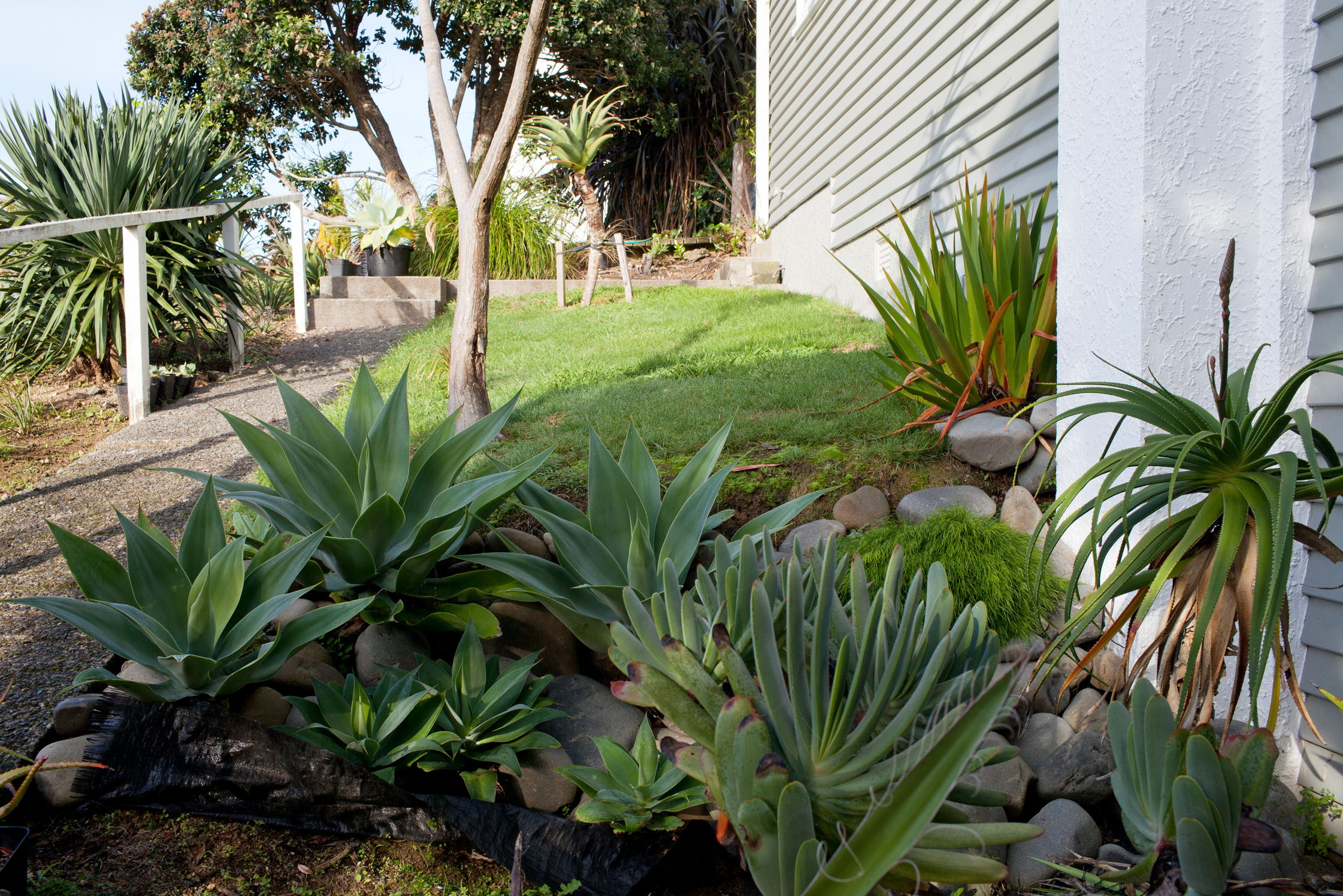











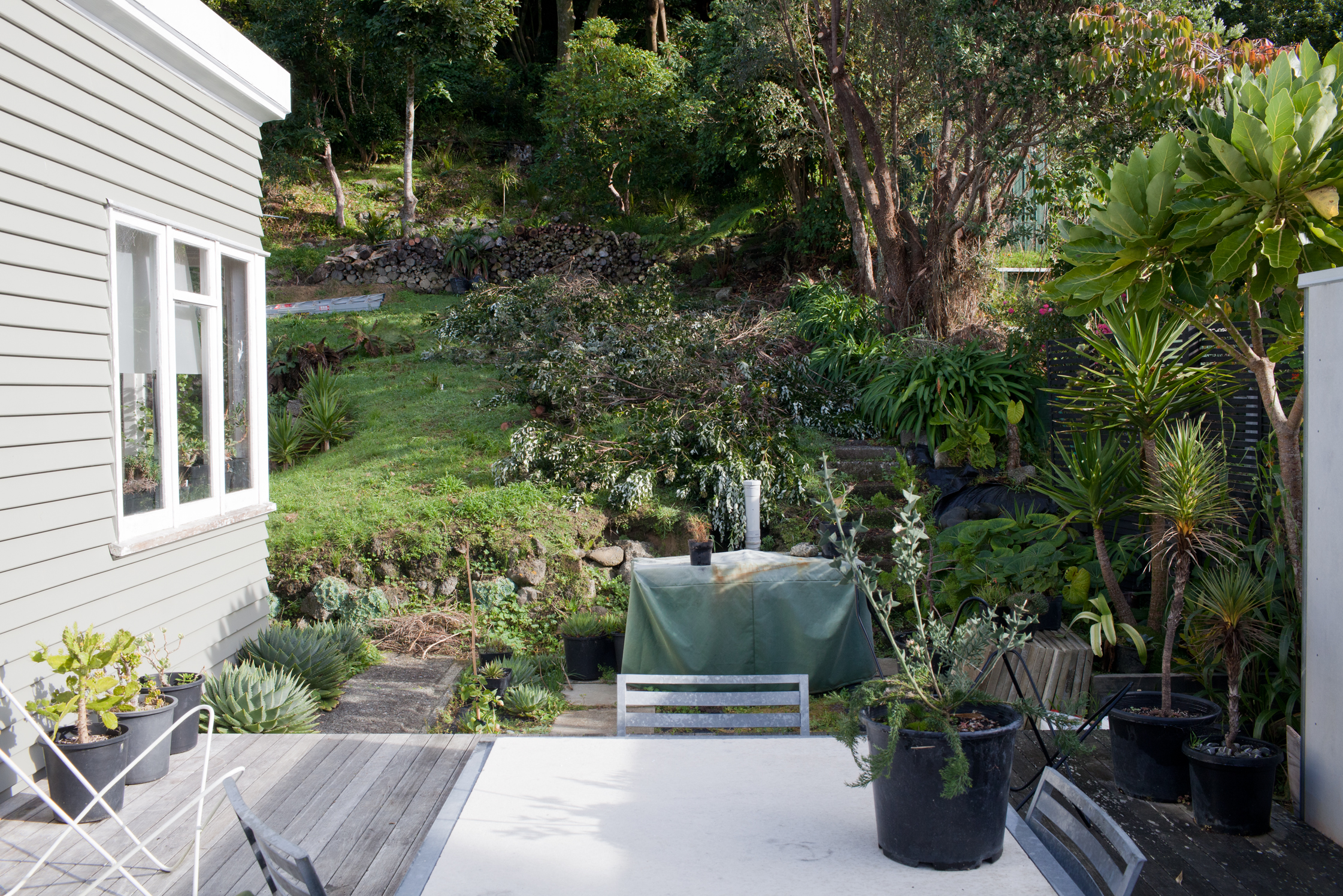


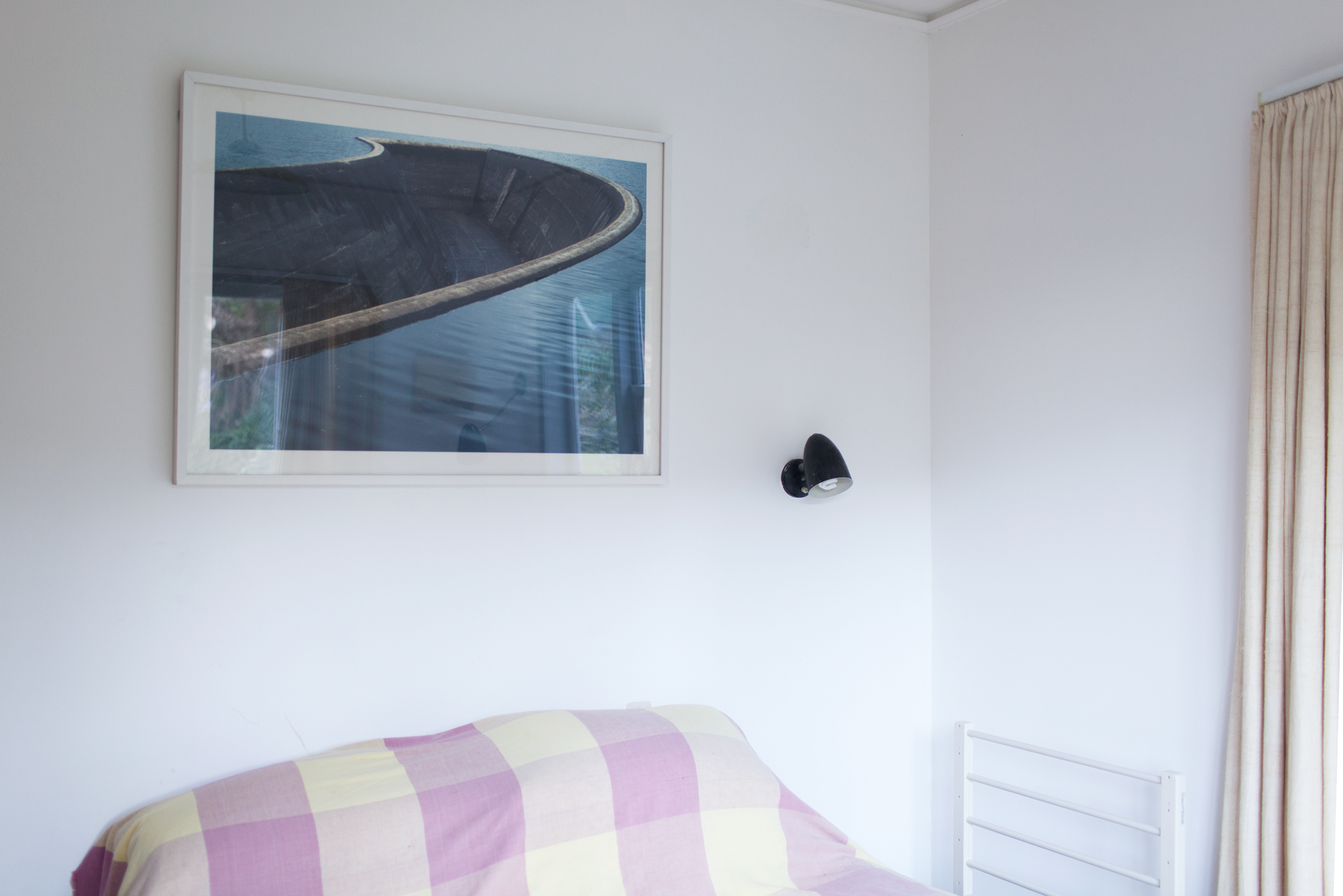













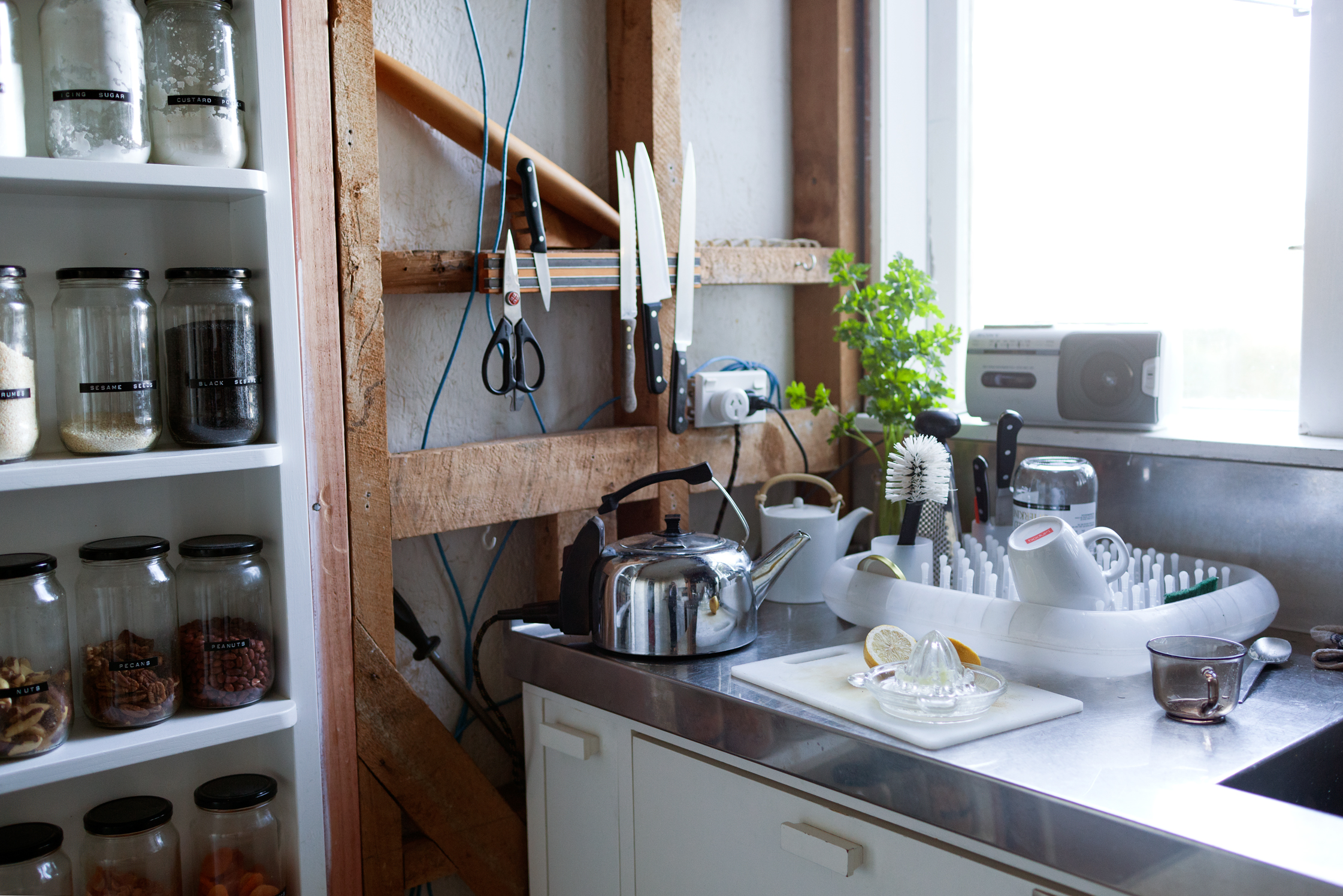



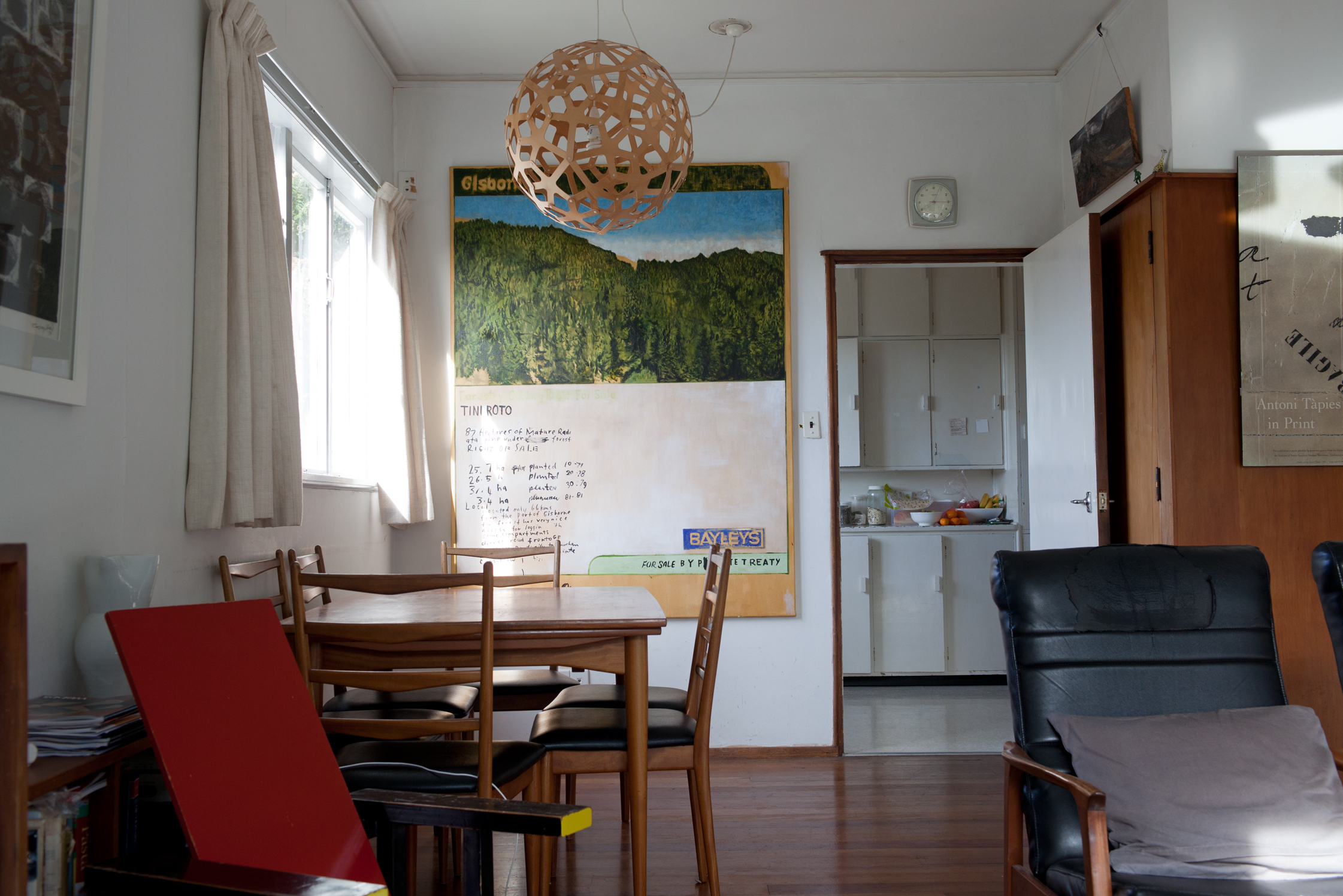

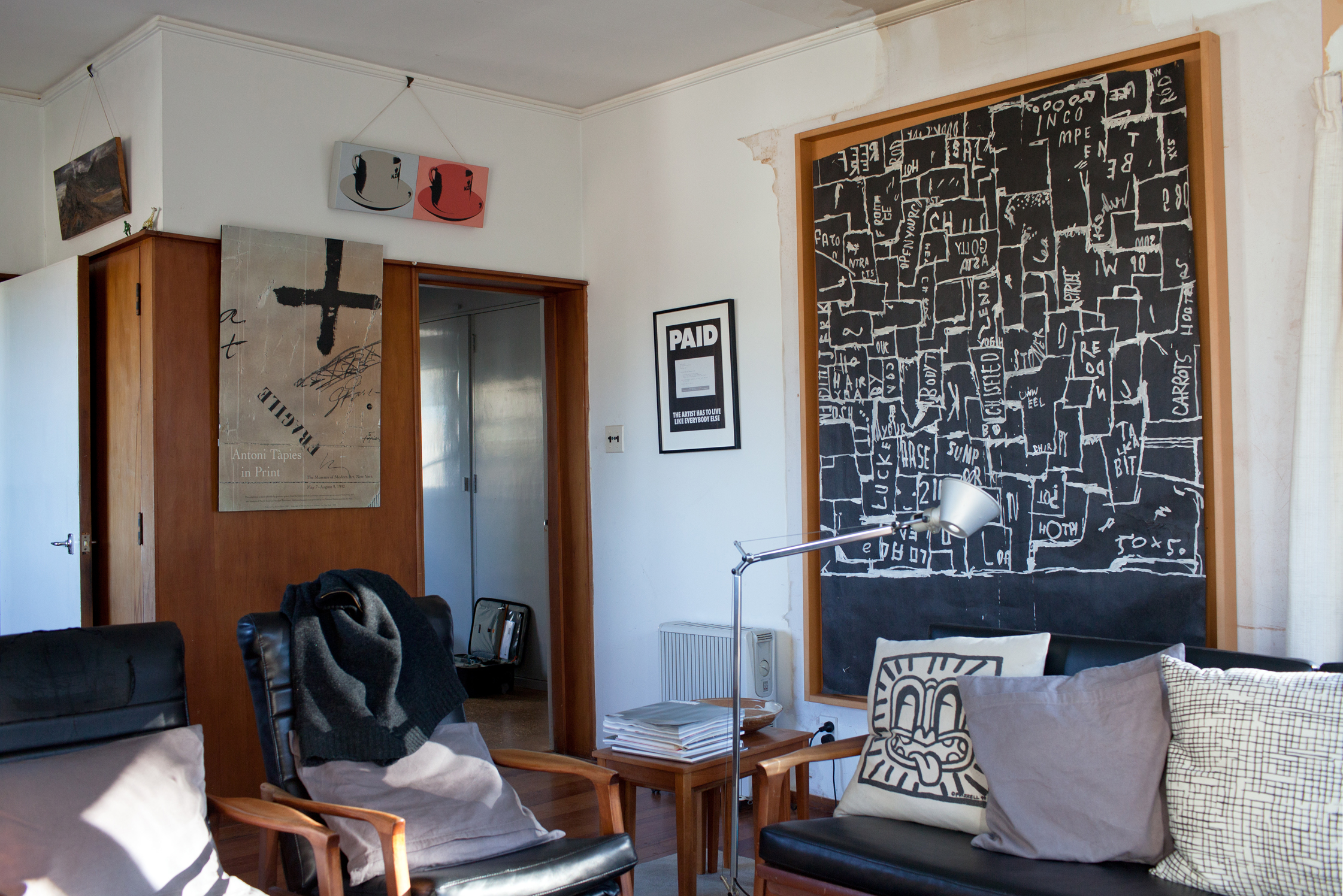











Have you both always lived in Wellington? Where did you grow up?
Phillipa: I was born in Wellington and left as a toddler, living in Christchurch and England. I came back to Wellington again when I was eight. I went to high school and university, then moved away to live in Palmerston North, Christchurch and Australia before returning to Wellington in 1992.
Ashley: I grew up in Hawke’s Bay and went to primary school in Havelock North, and then moved to Central Hawke’s Bay as a teenager. I traveled and worked overseas for a time and returned to Wellington to study architecture, and then completed my degree in Auckland before returning to Wellington to work for Athfield Architects.
So some good childhood and travel memories?
Phillipa: Yes, lots of family time, especially outdoors – climbing trees, picnics, walking, camping. We spent a long succession of summers camping with two other families on a farm in the Marlborough Sounds, fishing, collecting seafood, roaming the hills, exploring the woolsheds and creeks, playing tennis, cards, word games. We continued the tradition until my own boys were small. My family spent two years in the UK when I was small, and the six-week voyage by ship through the Panama Canal was a great adventure for a five-year-old, as was camping in Europe, all six of us piled into a Vauxhall Victor station-wagon, me in amongst the gear in the back!
Ashley: Summers in Hawke’s Bay as a child were fantastic growing up. Making things. A trolley and seat behind our motorized reel lawn mower – terrorizing the neighborhood with its revolving blades.
What do you love about Wellington?
Phillipa: I love the geography. Wellington’s harbor and hills enclose us, they give us views, weather, micro-climates, and local communities. The bus on my way to high school took me around a road with a spectacular view over the harbor – it set a different mood every morning. I also like the scale of Wellington. It’s small enough to feel like a community rather than a metropolis, yet has all the amenities you expect in a capital city.
How did you meet?
Phillipa: Ahh, we met through art and architecture. I was working at Victoria University and took on the role of client representative for the Adam Art Gallery development project. Ashley was project architect, and we both – along with many others – put a huge amount of personal investment into making it the fantastic university art gallery that it is. We stayed in touch through gallery activities and other shared interests, and became partners a few years later.
How would you describe each other’s personalities?
Phillipa: Ashley is very self-motivated, focused and principled. He sees things in black and white – while understanding the grey. We can discuss politics and philosophy and have a good debate, while agreeing on the core values. I think he’s mellowing slightly!
Ashley: I’m very organized – filing and tidying as I go. My attention to the dusting evidently leaves a bit to be desired. In this sense, we are perfectly complimentary.
Did you build this home together?
Phillipa: I bought this house for myself and my two teenage boys. We both knew it had good bones, and we both liked the architectural ethos of the house. Ashley is responsible for ensuring that we have kept true to it as we have made necessary improvements – it was built in 1945 and we are the second owners. The art, furniture, books and other features of our home are very much a joint effort which have evolved over time.
What is your favorite aspect of your house?
Phillipa: I like that the house is sited for the sun and the hillside and the bush. I like that we can have the curtains open and feel the daylight opening into our spaces, and then the night taking over at the other end of the day. Its very quiet. We can hear the ruru – native owl – in the night, and grey warblers and Tui singing during the day. And I love my new bathroom.
Ashley: Its measured European austerity. I often like things for what they aren’t as much as what they are. Architect German émigré, Ernst Gerson, tolerated the lack of selection of standard local materials and used them to clothe a subtle, rationally planned interior volume and exterior form.
Ashley you have a fascination for Aloe plants – quite a specific interest. How did this begin? You have many specimens inside and outside your home and a range of informative books on this topic.
Ashley: I began to be interested in sculptural plants as a not unrelated counterpoint to my architectural studies. I started to grow them, and then visit the places they come from, gather seeds and grow more. All plants in the garden, both in Wellington and at our other property in Napier, the ‘Littel House’, have a story. Most have habitat collection data and the seed from many are from the ‘type location’ of the particular species – their botanical genus loci.
It is clear you both share a love of nature and gardening. It must be very rewarding to see the results of your efforts grow over time. What do you have in the garden?
Phillipa: I grow things you can eat: herbs, salad greens, tomatoes, although this year the tomatoes were a complete failure. I also do weeding, trimming and tidying.
Ashley: I grow the succulents and cacti. Between Wellington and Napier, I have over 200 varieties of Aloe, many Agave and other similar plants. Then there are palms, bamboo and even the odd New Zealand native. I’m interested in plants for their form, the challenge of growing them, and the combinations that can be made in the landscape.
You have a range of artworks, ceramic bowls and a fascinating stone collection throughout the house. Where have you sourced these from and what significance do they hold?
Phillipa: Every piece has a story. We have a few things that are ‘random’ gifts or purchases, but most have another layer of significance somehow. The first artwork we bought together is a double portrait by Fergus Collinson, entitled ‘Karen and Bulent’. We were at a charity art auction and something about the characters of the figures and the way they were painted appealed – at some point in the bidding one of us said, “I’ll go you halves!” Since then we constantly test our shared taste and critical sense.
Ashley: We have a very personal collection in that it rejects any consideration of populism or monetary value. I have no interest in art as investment in that sense. The best investment in art is to live with it. We live with art as markers in our life. The work ranges from series of small stones of similar sizes we collected from three 1970’s American land art sites, to shot-up signs, to works of established artists. The Martin Poppelwell work above the workstation in my office entitled ‘rep-resent…ing’ is the artist’s meditation on the fraught nature of practice – a subject important to both Martin & myself – and the subject of perpetual discussion.
Ashley, you are also a photographer and have a large collection of slide transparencies…
Ashley: I reluctantly gave up shooting slide film upon returning from a trip to the United States in 2010 due to cost and availability. I guess you could say I fell into a negative space about photography. I now only take my high end digital compact with me most places, but have failed to become as digitally profligate as I thought I might. Meanwhile, my 30 year collection of high-speed prime lenses sits gathering dust.
Have you held any exhibitions?
Ashley: I exhibited a series of photographs in Wellington in 2001 and some large photographs at Black Barn Gallery, Havelock North, in 2008. I’ve also shown in regional group exhibitions in Hawke’s Bay.
You run an architectural firm under your name. Do you work on projects by yourself exclusively?
Ashley: Yes. That’s just the way it turned out. In New Zealand, there seem to be only two sizes of architecture practice: huge and small. Over 50% of all registered architects in New Zealand are in one or two person practices. This is perhaps due to the client demographic and relative scale of commissions. It’s a challenging model at times. It takes a major force to cross from one to another. My philosophy is centered around the principle of the sole collaborative practice focusing on direct client-architect partnership to create intelligent, bespoke environments from first principles.
You have been awarded the New Zealand National Architecture Award for your project in Napier ‘Studio for an artist’. It has been described endearingly as a ‘humble’ and ‘modest’ site-specific structure. Can you discuss this project? I see you have a model of it in your home
Ashley: The Studio is living proof of the importance of absolute dedication to the idea of the project in equal parts by the client and architect. The creative process needs to be owned by both parties. The facile notion that the professional services of an architect being constantly measured in terms of performance in any way does not yield architecture. A solely empirical methodology will always be disappointing.
On your website it states that you believe architecture and photography share a common observation in response to surroundings. It is clear you seek connections between different creative disciplines. Is this part of an overall working philosophy for you?
Ashley: To me the two are inextricable. Its just how I am wired. Some architects get excited pawing over the work of other architects. I read Artforum over breakfast and take photographs of a remote forest or abandoned cars. It’s a dietary thing. You are what you think.
Phillipa, you studied art history and anthropology? Today you are the Executive Director of Museums Aotearoa. How did you get into working within museums?
Phillipa: I have always visited museums and galleries, and became involved in their workings through the Adam Art Gallery project, from conception, fundraising, building, and program development through to operation. Museums Aotearoa brings together my academic interests with my skills as an organizer and manager, and I love the strategic and political aspects as well. I get great satisfaction from understanding and promoting the essential role that cultural institutions have in their communities, and helping them to perform that as well as they can.
What does your role involve and how does your background inform your position?
Phillipa: I am an organizer, facilitator and advocate. My role is to provide tools and support for museums and art galleries – and their staff and service providers – to do the very best that they can. I talk to politicians and funders, arrange conferences and networks, gather data and promote positive communication. I guess it helps to be a practical person, to have some empathy for the people working at the front line in museums, and to be able to inform that with some academic understanding.
Which museums do you work alongside and what types of initiatives do you engage in?
Phillipa: We work with all the public museums in Aotearoa New Zealand, from Te Papa and the other major science, history and art museums, to the small volunteer-run local history and specialist museums. Our outward-facing role is advocacy, promoting the value of museums and galleries, and providing the tools to support that, such as research and information and an awards program.
Do you have an active involvement with indigenous history and population?
Phillipa: We support a Kaitiaki network for Maori working in museums. Unfortunately I don’t speak Te Reo the Maori language, although I can briefly introduce myself. Maori history and culture is significant in most aspects of museum work, so a good understanding is essential. Of course we are becoming an increasingly diverse society, with global interactions, so there are many other cultures to consider as well.
What is the best advice someone has given you?
Phillipa: ‘It was easier than I thought’ – a phrase on an artwork given to me by an artist friend. It shows a figure vaulting a brick wall, and I suppose she was reminding me to take charge of my own life and not be stopped by barriers built by other people.
Ashley: I think more of a realization was when I got to the age of 30 I realized life wasn’t a practice run…
You have another property in Napier, just over 300 kilometers away from Wellington. Is this your weekend escape?
Phillipa: The ‘Littel house’ was originally intended as an investment, and a toe-hold in Hawke’s Bay particularly because of Ashley’s roots there. We stripped out the detritus of decades of rental tenants, and found we rather liked the activity of working on it as well as living in the simple spaces. And the weather’s a whole lot better than Wellington. It is an escape, a place where we go to relax and limit the complexities – but we do sometimes take work with us.
Ashley: The story was that I moved my office to our under-occupied home, and we offset this with the purchase of the Littel House. An investment in life. The four hour drive is cathartic. I love to drive and listen to music.
Where would you recommend someone to visit traveling to New Zealand for the first time?
Ashley: Take the three to four day walk around Lake Waikaremoana. You don’t have to go to the South Island to see the real New Zealand.
Phillipa: I’m a South Islander, and I’d have to say the beech forests and mountains and streams in the Southern Alps are absolutely special.
What is your favorite local cafe?
Phillipa: Hohepa Farm is a residential community in Hawke’s Bay which provides work for people with disabilities, and they make wonderful cheeses as well as fresh organic produce. I love their cumin gouda, danbo and quark, free range eggs and really tasty salad mix. There are so many local producers in the Bay that we’re spoilt for good fresh ingredients. Then I like to stay at the Littel House and put it all together with Ashley’s coffee – we do great extended brunches.
Where do you see yourselves in the future?
Ashley: I have a vision of a time where we might have a work-life balance.
Phillipa: I think we’d both like to travel more, as well as following through on work opportunities – although I’m not sure where in either case!
Phillipa and Ashley, it was great to get to know you both and take a tour of your home in Wellington. To find out more about Ashley’s architectural practice see the website here and view the Museums Aotearoa website here.
Photography: Mary Gaudin
Interview & Text: Rachael Watts
